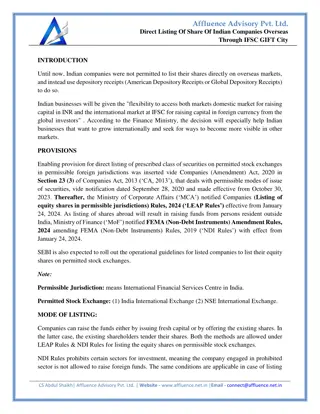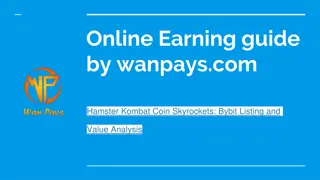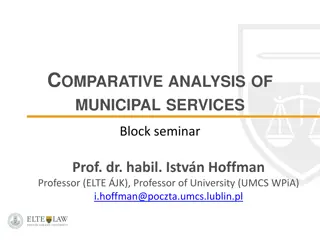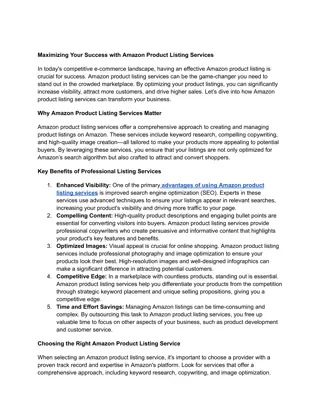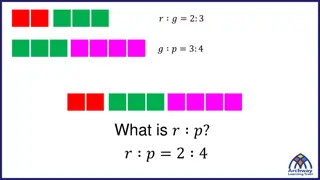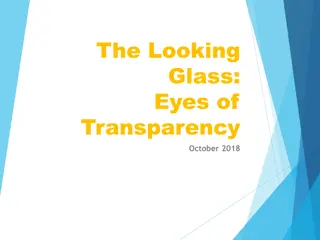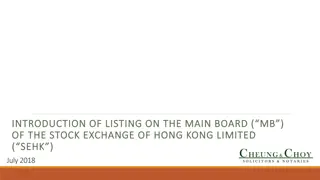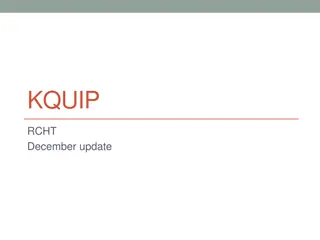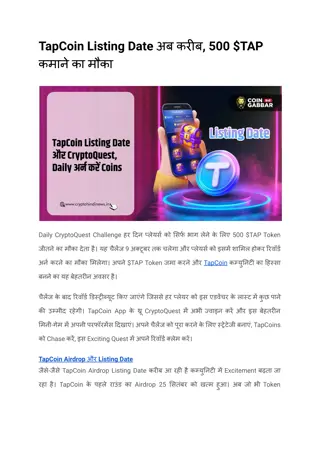1. Topic: MCEV vs EEV Approach in Public Listing
Discussion on approach adopted by companies before public listing, covering the need for Embedded Value, historical developments, challenges, advantages, and implementation challenges of MCEV, with a focus on the Indian Actuarial Profession.
Download Presentation

Please find below an Image/Link to download the presentation.
The content on the website is provided AS IS for your information and personal use only. It may not be sold, licensed, or shared on other websites without obtaining consent from the author.If you encounter any issues during the download, it is possible that the publisher has removed the file from their server.
You are allowed to download the files provided on this website for personal or commercial use, subject to the condition that they are used lawfully. All files are the property of their respective owners.
The content on the website is provided AS IS for your information and personal use only. It may not be sold, licensed, or shared on other websites without obtaining consent from the author.
E N D
Presentation Transcript
28th India Fellowship Seminar Topic: MCEV VS EEV Approach discussion on approach adopted by companies before public listing Guide Name: Asha Murali Presenters Name: 1. Krithika Verma 2. Aditya Shah 3 Mithil Sejpal Date: 9 November 2017 Mumbai Indian Actuarial Profession Serving the Cause of Public Interest
AGENDA 1. Need for Embedded Value (EV) 2. Historical Developments 3. Today s challenges 4. EEV vs. MCEV 5. Implementation challenges of MCEV 6. Advantages of MCEV 7. Listing process A perspective 8. APS 10 Requirements 9. Other listing requirements 2
Why is there a need for Embedded Value (EV) ? Measures to compute value of a life insurer: Internal Uses External Uses Balance sheet Assets less Liabilities (Book value basis) Performance Measurement (Management) Mergers & Acquisition Profit & Loss (Historic measure) Income (No allowance for risk and cost of capital) Performance Measurement (Product) Raise Capital EV represents the consolidated value of shareholder s interests in the business Comparison of companies Capital Allocation 3
EV has come a long way ! 2009 2008 MCEV Amended 2004 MCEV 2001 EEV 1980s APM / TEV Not prescribed AMP Pearl merger (Criticized) Lack of consistency & transparency Improved allowance for risk Risk neutral probabilities Dysfunctional Markets 1980s 2001 2004 2008 2009 Market consistent assumptions Liquidity premium Lack of published financial information Subjectivity in setting RDR Stochastic valuation of options & guarantees Options & guarantees computed deterministically Lack of computing power 4
A look around us EUROPE TEV / EEV {No formal disclosures} Market consistent EV 16% Other 10% SII Based 32% MCEV 42% TEV / EEV {No formal disclosures} ASIA IEV 3% MCEV 14% EEV 83% 5
And the debate continues Cost of Capital Convergence of EV and SII Choice of risk-free rate in illiquid and non-existent markets Curve construction - Interpolation/extrapolation methodology Whether and how to allow for a liquidity premium 6
European Embedded Value (EEV) European Embedded Value Value In Force Shareholder s Net Worth+ TVOG Required Capital Free Surplus+ PV of Future Profits - COC 8
Market Consistent Embedded Value (MCEV) Market Consistent Embedded Value Value In Force Shareholder s Net Worth+ TVOG Required Capital Free Surplus+ PV of Future Profits - FRCC CRNHR 9
Key changes to EV methodology under MCEV 1. Risk Neutral Valuation All assets are assumed to earn the risk free rate (RFR) RFR is taken as the swap yield curve including a liquidity premium for illiquid liabilities 2. Cost of Non Hedgeable Risk (CRNHR) Risks not included elsewhere Includes correlations, dynamic customer behaviour that are not accounted for 10
Key changes to EV methodology under MCEV 3. Frictional Cost of Capital (FRCC) Represents the cost of holding Required Capital from shareholder s perspective Costs include: investment expenses and tax on investment return 4. Time Value of Options and Guarantees (TVOG) Clear guidance to use risk neutral approach Use prices of similar instruments that mirror the liability cash flows 11
Challenges in implementing MCEV 1. Risk Neutral Valuation Markets where swap curves are not sufficiently robust Potentially volatile results in turbulent markets Valuing cash flows with longer durations 2. Cost of Non Hedgeable Risk Lacks detailed guidance with respect to its computation 3. Modeling Policyholder options and guarantees Dynamic policyholder behaviour and management action 12
Advantages of MCEV over its predecessors 1. Higher degree of comparability between results of different companies Standard format for movement analysis 2. Has injected more objectivity in the process of producing results Mark to market basis 3. Reduces the scope of managing the results Strengthening of requirement for external review Wider range of sensitivities 13
Why is EV important for Listing? Generally Expressed as a Multiple of EV Life Insurance Valuation Multiple would vary as per the New Business Profitability Embedded Value Structural Value EPV# of profits on business already written (ViF) Adjusted Net worth (ANW) Expected NBM X Next year s APE Capitalization Factor Expected future growth in NBM Expected future growth in APE # Expected Present Value 15
Confidential for internal use only The Listing Process Data Audit, Model Audit Month 1 Month 2 Month 3 Month 4 Month 5 Month 6 Month 7 Appointment of Bankers, Lawyers Independent Actuary, Data Auditors (APS10 Report) IRDAI approval to IPO Submission of EV Report Preparation of Draft Red Hearing Prospectus Business positioning and key metrics Financial statements Due-diligence Securities and Exchange Board of India approval Marketing Pricing and allocation 16
Value-in-Force (1) Assumptions Non-Economic : based on best estimate of future experience having regard to credible current & past experience with expected changes in the future operating environment Economic : Discount rate - based on Reference rates; Inflation - based on Market Data Reference Rates Proxy for Risk Free Rate - G-Sec Yield Curve or Swap Yield Curve (in case of deep markets) Participating Contracts Assumptions about future bonuses & profit allocation between shareholders/policyholders Future bonus assumption to be consistent with future investment return assumption Differing Views Curve fitting for Risk-Free Yield Curve Timing for release of participating fund FFA Release of global reserves 18
Value-in-Force (2) TVFOG FC CRNHR Allowance for cost of embedded options & guarantees in the event of adverse market movements Calculations must be based on stochastic techniques The first step is identification of products consisting of such options/guarantees - includes ULIPs with Capital/NAV guarantee, Par products (to the extent of SA & accrued bonuses), Group fund based Appropriate allowance for management action in adverse scenario needs to be made (say bonus reduction) It reflects the taxation and investment management cost of earnings from assets backing the required capital Requires projection of required capital over the lifetime of the existing book Capital includes investment in subsidiaries as well CRNHR is the present value of the cost of capital charge levied on the projected capital in respect of the identified material non- hedgeable risks Allowance for risks is generally made to the extent that these are not already allowed for in the TVFOG/PVFP Risks generally include operational, mortality, lapse Cost of capital charge have been found to be varying between 3.5-5% 19
Adjusted Net Worth Net Worth Movement (800) 300 100 Free Surplus 1,400 2,300 3,900 3,600 Required Capital 2,500 2,000 Initial Capital Accumulated Surplus Dividends FVC (net of Tax) Balance Sheet Net Worth MV Uplift Adj Net Worth ANW Components Net Worth Adjustment is done as EV principles require all valuation on market values Under Balance Sheet, Debt is valued at amortized cost, whereas Equity is valued at market value APS 10 Requires a split of Networth between Free surplus/Required Capital & reconciliation of the same Differing views Treatment of market value adjustment on non-par group funds management business Tax on the unrealised gains / losses on equities in the balance sheet? 20
AoM - Live Example Management s view of expected returns, generally based on locked- in yields of assets held +ve variance indicates better Persistency, lower Mortality/Expense than that assumed for calculating EV EVOP % = IEV Operating Earning/Opening EV Source: HDFC Life DRHP 22
Other APS10 Requirements (2) - Sensitivities +/-100/200 bps Equity shock of 10/20% 25% change in equity volatility Investment +/-10% in maintenance expenses +/-10% acquisition expenses Expenses +/- 10/50% change in persistency rates Mass Lapsation of 25/50% at end of lock-in period +/- 50% change in surrender rates post lock-in Persistency +/- 5% (multiplicative) in the mortality / morbidity rates Required capital set equal to the level of solvency capital Assumed tax rate increased to match corporation tax rate for other industries Others Sensitivities carried out by changing one parameter in isolation Separate sensitivities required for VNB/EV Ambiguity whether market value adjustments are applicable in economic sensitivities 23
Other Listing Requirements Date of listing to be carefully chosen financials valid for a 135 day period Supplementary EV report consisting only of headline EV/VNB number - applicable where listing is not immediately after financial year-end Segment-wise Lapse Profits (area mandated by regulators) Data Audit Queries raised by Analyst/Investment houses during road-shows, marketing 24
Questions!! Because, It is not the answer that enlightens, but the question. 25


